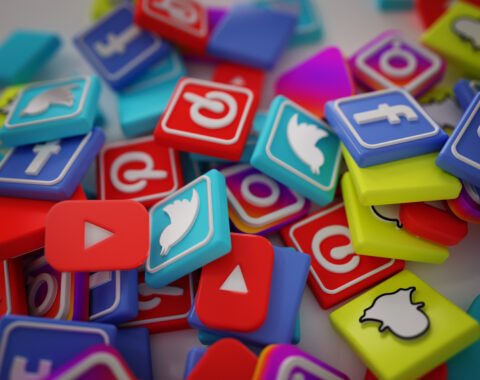Today’s rapid digital landscape bombards consumers with information and ads from all sides. It makes it tough to stand out and engage your audience. It’s a growing challenge to break through the noise and captivate your audience. However, there’s a potent solution at hand: Gamification.
This ingenious technique involves integrating the mechanics of games into contexts that aren’t inherently games. By leveraging humanity’s innate yearning for competition, accomplishment, and enjoyment, gamification presents an innovative avenue for digital marketers. It enables them to not only seize and maintain consumer attention but also to steer their behaviors in desired directions. In the following article, we will explore the art of mastering gamification and seamlessly weaving elements of amusement into your digital marketing strategies.
Understanding Gamification’s Impact on Engagement
Studies show that gamification can boost engagement by up to 100%, making it a potent tool in the digital marketer’s arsenal (Deterding et al., 2011). By introducing game mechanics like points, badges, and leaderboards, you tap into users’ competitive nature, driving them to interact more with your brand.
The Science Behind the Fun
Psychological theories, like Self-Determination Theory, explain why gamification works. It highlights the importance of autonomy, competence, and relatedness – key elements that games often provide (Deci & Ryan, 1985). Incorporating these elements into your marketing strategy fosters a sense of accomplishment and community among users.
Personalization for Deeper Engagement
82% of users expect personalized experiences from brands (Epsilon, 2020). Gamification can play a pivotal role here. Tailoring challenges and rewards based on user behavior not only boosts engagement but also shows that you value individual preferences.
Creating a Sense of Achievement
Humans thrive on achievement. When users accomplish tasks, their brains release dopamine, triggering positive emotions (Kaplan, 2016). By integrating achievable goals within your marketing strategy, you can create a cycle of reward-driven engagement.
Gamification for Data Collection
Collecting user data is essential for refining your marketing strategies. Gamified surveys can make this process enjoyable and insightful. Research indicates that gamified surveys yield 68% higher completion rates compared to non-gamified ones (Cugelman, 2013).
Fostering Healthy Competition
Leaderboards spark healthy competition among users, driving them to outdo each other. This competitive spirit can result in increased time spent interacting with your brand. According to a study by Contently, 60% of surveyed marketers found that gamification led to increased website traffic.
The Virality Factor
Introducing social components to your gamified strategies can make them go viral. When users share their achievements, it not only promotes your brand but also encourages their peers to participate (Jin et al., 2010).
Case Study: Duolingo’s Language Learning Gamification
A prime example of gamification’s success is Duolingo. The language-learning app employs gamified elements like streaks, levels, and in-app currency. This approach has resulted in 38% of users studying daily, showcasing the power of gamification (Duolingo, n.d.).
Avoiding Common Pitfalls
While gamification offers numerous benefits, it’s crucial to avoid overcomplicating the user experience. Keep the mechanics intuitive and aligned with your brand’s identity. Additionally, monitor user feedback to ensure the gamified elements resonate positively.
Incorporating Gamification: A Step-by-Step Guide
Identify Objectives:
- Define clear goals for incorporating gamification into your strategy, such as increasing website visits or boosting social media interactions.
- Know Your Audience: Understand your target demographic’s preferences and behaviors to tailor gamified elements accordingly.
- Choose Appropriate Mechanics: Select game mechanics that align with your objectives and resonate with your audience.
- Integrate Seamlessly: Incorporate gamified elements naturally into your existing platforms, maintaining a consistent brand image.
- Test and Iterate: Continuously test different gamification strategies and gather user feedback to refine and improve the experience.
- Measure Performance: Monitor key metrics like engagement rates, time spent, and conversion rates to assess the impact of gamification.
Building Emotional Connections
Gamification can stir powerful user emotions. Emotional brand connections foster customer loyalty. Harnessing gamification’s emotional impact can transform users into dedicated brand advocates. Gartner forecasts a 40% rise in customer retention by 2024 with gamification adoption.
Enhancing Learning and Training
Adding gamified elements to educational content enhances learning. It boosts active participation and motivation among learners. This approach has the potential to revolutionize how education is delivered and absorbed. A Journal of the American Dental Association study found dental students using gamified learning retained 20% more knowledge than with traditional methods.
Exploring Augmented Reality (AR) and Virtual Reality (VR)
The integration of gamification with AR and VR opens up new avenues for immersive experiences. Brands like Pokémon GO have capitalized on this trend, with 147 million active users as of 2021 (Sensor Tower, 2021). This fusion creates opportunities for location-based marketing and interactive product demonstrations.
Unlocking User-Generated Content
Gamification can encourage users to create content related to your brand. Contests and challenges prompt users to generate videos, images, or posts, amplifying your brand reach. Starbucks’ White Cup Contest resulted in over 4,000 user-created designs within three weeks (Starbucks, 2014).
Balancing Competition and Collaboration
While competition can drive engagement, collaboration shouldn’t be ignored. Multiplayer games or collaborative challenges can foster a sense of community. A study by Badgeville found that 90% of employees responded positively to gamified experiences that promoted collaboration.
Long-Term Engagement through Storytelling
Incorporate storytelling elements into your gamification strategy to maintain long-term engagement. Narrative-driven games like Telltale’s “The Walking Dead” series have shown how gripping storytelling can keep players hooked over multiple episodes.
Ethical Considerations and Transparency
Ensure that your gamification strategy is transparent and ethically sound. Gamification should not manipulate or exploit users. Build trust by clearly communicating the rewards, rules, and data usage to maintain a positive user experience.
Measuring Return on Investment (ROI)
Just like any marketing strategy, tracking the ROI of gamification is vital. Analyze metrics such as conversion rates, customer lifetime value, and user-generated content production to gauge the effectiveness of your gamified campaigns.
Continuous Innovation
The digital scene changes fast, and your gamification tactics should too. Adapting swiftly ensures your gamification remains effective. Embracing the gaming industry’s growth trajectory can inspire innovative strategies. PwC’s Global Entertainment & Media Outlook predicts a 4.1% CAGR growth (2020-2025) in the gaming sector.
Global Reach and Cultural Sensitivity
If your gamification strategy goes international, consider cultural nuances. Different cultures respond differently to game mechanics and rewards. Research conducted by Nielsen found that 68% of global respondents in their survey considered cultural relevance to be highly important in their content consumption.
Gamification isn’t just a passing trend. It’s a strategic approach that can revolutionize your digital marketing efforts. It lets users actively participate, turning your brand into a living adventure. By tapping into human psychology and incorporating elements of fun and challenge, you can create memorable experiences that drive engagement, foster loyalty, and ultimately lead to business growth.




